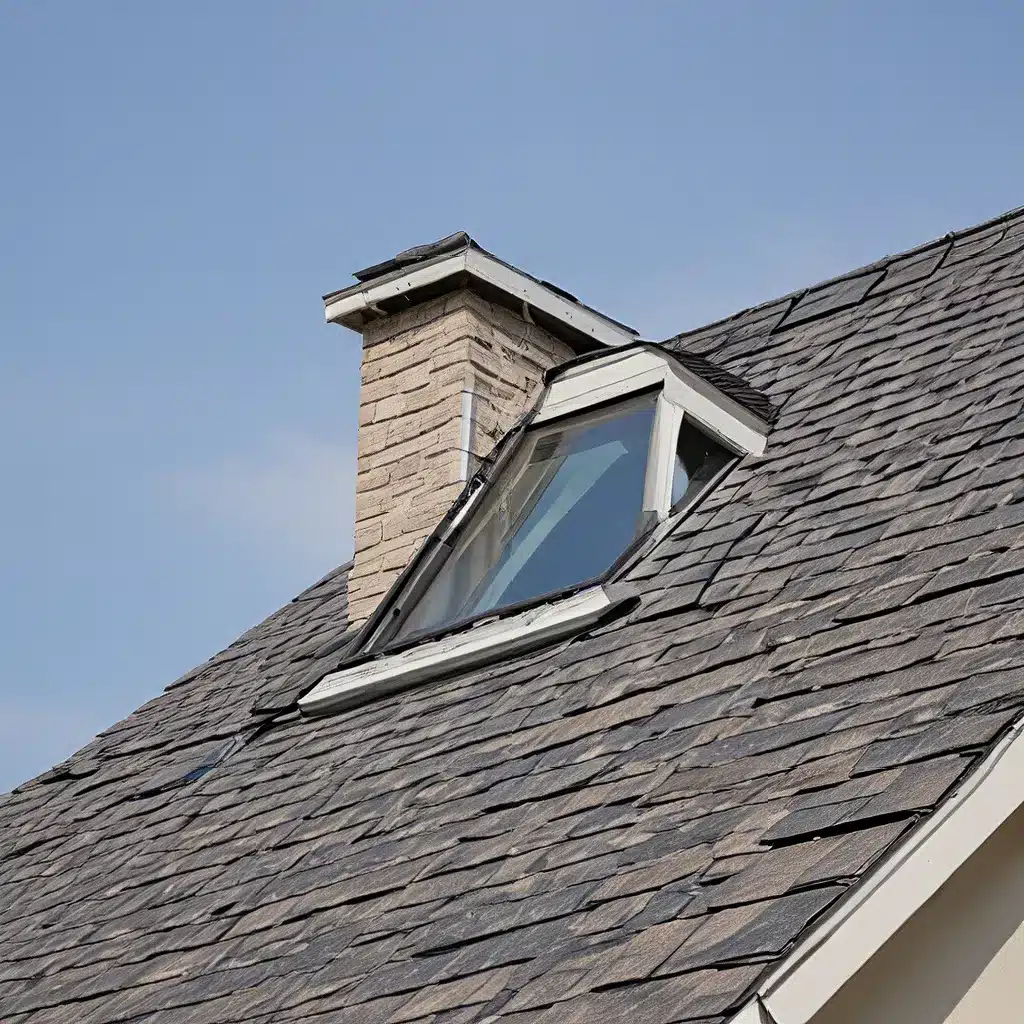
Understanding the Importance of Proper Roof Ventilation
Ah, the humble roof – often overlooked, yet a crucial component in the quest for a comfortable and efficient home. As the seasons change and the weather fluctuates, the significance of a well-ventilated roof cannot be overstated. It’s not just a feature of a well-built home; it’s the very cornerstone of its longevity, energy efficiency, and the comfort of its inhabitants.
You see, roof ventilation operates on a simple yet profound principle: to facilitate a continuous flow of air through the attic space, thereby preventing the buildup of heat and moisture. This delicate balance is crucial for the health of your home, as it directly impacts energy consumption, indoor air quality, and the lifespan of your roofing materials.
The National Roofing Contractors Association (NRCA) has a tried-and-true prescription for achieving this balance: for every 300 square feet of attic space, there should be 1 square foot of ventilation. This ratio is the bedrock of effective roof ventilation design, and it’s the standard that we’ll be exploring in depth.
Exploring the Diversity of Roof Ventilation Systems
Now, the diversity in roof ventilation systems is vast, encompassing everything from Electric Powered Attic Vents to Wind Turbines and Natural Ventilation options. Each system has its unique advantages, tailored to different architectural styles, climates, and homeowner preferences.
For instance, Electric Powered Attic Vents offer precise control over attic ventilation, making them ideal for climates with extreme temperatures. On the other hand, Wind Turbines utilize natural forces to ventilate the attic, providing an eco-friendly solution without the need for electrical power. And then there’s Natural Ventilation, which leverages the inherent design of the home to promote airflow – a method that’s both cost-effective and efficient.
The selection of the right vent type is a critical decision in the roof ventilation process. Options range from Ridge Vents, which run along the peak of the roof to allow hot air to escape, to Static Vents, which provide a passive ventilation solution. Roof Turbines and Gable Vents offer alternative solutions, each with specific installation requirements and benefits.
The choice among these options should be informed by the specific needs of the home, including its design, location, and the homeowner’s budget. After all, the right ventilation system can make all the difference in creating a comfortable and energy-efficient living environment.
The Benefits of Proper Roof Ventilation
But the benefits of a well-ventilated roof extend far beyond the immediate comfort of the home’s occupants. Proper ventilation can prevent the accumulation of moisture, thereby protecting the roof from mold growth and structural damage. Additionally, by reducing the need for air conditioning in the summer and heating in the winter, a well-designed roof ventilation system can lead to significant savings on energy bills.
While the initial installation cost may be a consideration, the long-term savings and extended lifespan of the roofing materials offer a compelling return on investment. It’s a strategic upgrade that enhances the overall efficiency and health of the home, and it’s a project that’s well worth the effort.
Tackling the DIY Roof Ventilation Project
For the DIY enthusiast, the installation of a roof ventilation system can be a rewarding project. It requires a careful selection of materials, a clear understanding of the ventilation needs of the home, and a meticulous approach to installation. The process is not a quick fix, but a strategic upgrade that enhances the overall efficiency and health of the home.
With the right tools and guidance, homeowners can undertake this project, ensuring their efforts are rewarded with a more comfortable, energy-efficient living environment. The installation of a roof ventilation system is just the beginning, though. Regular maintenance, including debris removal and inspections for damage, is essential for ensuring the system’s longevity and efficiency.
Furthermore, as the home ages or its occupancy changes, the ventilation system may require adjustments or upgrades. Staying informed about the latest ventilation technologies and standards is crucial for maintaining an optimal living environment.
Consulting with Professionals for Tailored Advice
When considering roof ventilation, homeowners often have questions about the necessity, selection, and maintenance of their systems. It’s important to consult with a professional contractor, like the team at Southern Roofing Company, who can provide tailored advice based on the home’s specific needs and local climate conditions.
After all, every home benefits from proper ventilation, and neglecting this aspect can lead to moisture-related issues, including mold growth. The experts at Southern Roofing Company are passionate about helping homeowners create comfortable and efficient living spaces. So, why not reach out and join the family?
Conclusion: Embracing the Art of Roof Ventilation
In the quest for a harmonious and efficient home, the significance of a well-ventilated roof cannot be overstated. A properly designed and maintained roof ventilation system is the cornerstone of a home’s longevity, energy efficiency, and the comfort of its inhabitants.
From the diversity of ventilation systems to the strategic installation and ongoing maintenance, mastering the art of roof ventilation is a journey worth embarking on. By understanding the principles, exploring the options, and seeking professional guidance, homeowners can elevate their living spaces to new levels of comfort and efficiency.
So, whether you’re a DIY enthusiast or a homeowner seeking expert advice, let’s dive into the fascinating world of roof ventilation and unlock the secrets to a more comfortable, energy-efficient, and sustainable home. The rewards are waiting, and the journey is well worth the effort.